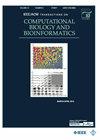A Comprehensive Evaluation Framework for Benchmarking Multi-Objective Feature Selection in Omics-Based Biomarker Discovery
IF 3.4
3区 生物学
Q2 BIOCHEMICAL RESEARCH METHODS
IEEE/ACM Transactions on Computational Biology and Bioinformatics
Pub Date : 2024-10-14
DOI:10.1109/TCBB.2024.3480150
引用次数: 0
Abstract
Machine learning algorithms have been extensively used for accurate classification of cancer subtypes driven by gene expression-based biomarkers. However, biomarker models combining multiple gene expression signatures are often not reproducible in external validation datasets and their feature set size is often not optimized, jeopardizing their translatability into cost-effective clinical tools. We investigated how to solve the multi-objective problem of finding the best trade-offs between classification performance and set size applying seven algorithms for machine learning-driven feature subset selection and analyse how they perform in a benchmark with eight large-scale transcriptome datasets of cancer, covering both training and external validation sets. The benchmark includes evaluation metrics assessing the performance of the individual biomarkers and the solution sets, according to their accuracy, diversity, and stability of the composing genes. Moreover, a new evaluation metric for cross-validation studies is proposed that generalizes the hypervolume, which is commonly used to assess the performance of multi-objective optimization algorithms. Biomarkers exhibiting 0.8 of balanced accuracy on the external dataset for breast, kidney and ovarian cancer using respectively 4, 2 and 7 features, were obtained. Genetic algorithms often provided better performance than other considered algorithms, and the recently proposed NSGA2-CH and NSGA2-CHS were the best performing methods in most cases.基于 omics 的生物标记发现中多目标特征选择基准的综合评估框架。
机器学习算法已被广泛用于对基于基因表达的生物标记物驱动的癌症亚型进行准确分类。然而,结合多种基因表达特征的生物标志物模型在外部验证数据集中往往不可重现,而且其特征集的大小往往没有得到优化,从而影响了其转化为具有成本效益的临床工具的能力。我们研究了如何解决在分类性能和特征集大小之间找到最佳权衡的多目标问题,应用了七种机器学习驱动的特征子集选择算法,并分析了它们在八个大规模癌症转录组数据集(涵盖训练集和外部验证集)基准中的表现。该基准包括根据组成基因的准确性、多样性和稳定性评估单个生物标记物和解决方案集性能的评价指标。此外,还提出了一种用于交叉验证研究的新评价指标,该指标对通常用于评估多目标优化算法性能的超体积(hypervolume)进行了概括。在乳腺癌、肾癌和卵巢癌的外部数据集上,分别使用 4 个、2 个和 7 个特征的生物标志物显示出 0.8 的均衡准确性。遗传算法的性能往往优于其他算法,最近提出的 NSGA2-CH 和 NSGA2-CHS 在大多数情况下是性能最好的方法。
本文章由计算机程序翻译,如有差异,请以英文原文为准。
求助全文
约1分钟内获得全文
求助全文
来源期刊
CiteScore
7.50
自引率
6.70%
发文量
479
审稿时长
3 months
期刊介绍:
IEEE/ACM Transactions on Computational Biology and Bioinformatics emphasizes the algorithmic, mathematical, statistical and computational methods that are central in bioinformatics and computational biology; the development and testing of effective computer programs in bioinformatics; the development of biological databases; and important biological results that are obtained from the use of these methods, programs and databases; the emerging field of Systems Biology, where many forms of data are used to create a computer-based model of a complex biological system

 求助内容:
求助内容: 应助结果提醒方式:
应助结果提醒方式:


